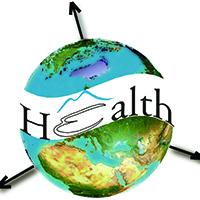Post-traumatic stress in people from the interior drylands of the Maule region, Chile in the context of climate change

Submitted: 6 September 2021
Accepted: 1 December 2021
Published: 18 May 2022
Accepted: 1 December 2021
Abstract Views: 1480
PDF: 674
HTML: 36
HTML: 36
Publisher's note
All claims expressed in this article are solely those of the authors and do not necessarily represent those of their affiliated organizations, or those of the publisher, the editors and the reviewers. Any product that may be evaluated in this article or claim that may be made by its manufacturer is not guaranteed or endorsed by the publisher.
All claims expressed in this article are solely those of the authors and do not necessarily represent those of their affiliated organizations, or those of the publisher, the editors and the reviewers. Any product that may be evaluated in this article or claim that may be made by its manufacturer is not guaranteed or endorsed by the publisher.
Similar Articles
- Lucia Fazzo, Mario Carere, Francesco Tisano, Caterina Bruno, Achille Cernigliaro, Maria Rita Cicero, Pietro Comba, Maria Luisa Contrino, Marco De Santis, Fabrizio Falleni, Vincenzo Ingallinella, Anselmo Madeddu, Ida Marcello, Carlo Regalbuto, Giovanna Sciacca, Maria Eleonora Soggiu, Amerigo Zona, Cancer incidence in Priolo, Sicily: a spatial approach for estimation of industrial air pollution impact , Geospatial Health: Vol. 11 No. 1 (2016): Valencia Issue
- Guibo Sun, Robert Haining, Hui Lin, Nicolas M. Oreskovic, Jie He, Comparing the perception with the reality of walking in a hilly environment: an accessibility method applied to a University campus in Hong Kong , Geospatial Health: Vol. 10 No. 1 (2015)
- Marcelo Leiva-Bianchi, Carlos Mena, Yony Ormazábal, Carlos Serrano, Pedro Rojas, Changes in geographic clustering of post-traumatic stress disorder and post-traumatic growth seven years after an earthquake in Cauquenes, Chile , Geospatial Health: Vol. 15 No. 2 (2020)
- Sue C. Grady, April N. Frake, Qiong Zhang, Matlhogonolo Bene, Demetrice R. Jordan, Joshua Vertalka, Thania C. Dossantos, Ameen Kadhim, Judith Namanya, Lisa-Marie Pierre, Yi Fan, Peiling Zhou, Fatoumata B. Barry, Libbey Kutch, Neonatal mortality in East Africa and West Africa: a geographic analysis of district-level demographic and health survey data , Geospatial Health: Vol. 12 No. 1 (2017)
- Guibo Sun, Chris Webster, Michael Y. Ni, Xiaohu Zhang, Measuring high-density built environment for public health research: Uncertainty with respect to data, indicator design and spatial scale , Geospatial Health: Vol. 13 No. 1 (2018)
- Ana Isabel Ribeiro, Elias Teixeira Krainski, Marilia Sá Carvalho, Maria de Fátima de Pina, The influence of socioeconomic deprivation, access to healthcare and physical environment on old-age survival in Portugal , Geospatial Health: Vol. 12 No. 2 (2017)
- Patrick Spets, Karin Ebert, Patrik Dinnétz, Spatial analysis of antimicrobial resistance in the environment. A systematic review , Geospatial Health: Vol. 18 No. 1 (2023)
- Michelle S. Wong, Jennifer M. Peyton, Timothy M. Shields, Frank C. Curriero, Kimberly A. Gudzune, Comparing the accuracy of food outlet datasets in an urban environment , Geospatial Health: Vol. 12 No. 1 (2017)
- Akihiko Michimi, Michael C. Wimberly, The food environment and adult obesity in US metropolitan areas , Geospatial Health: Vol. 10 No. 2 (2015)
- Hassan M. Khormi, Lalit Kumar, Future malaria spatial pattern based on the potential global warming impact in South and Southeast Asia , Geospatial Health: Vol. 11 No. 3 (2016)
You may also start an advanced similarity search for this article.

 https://doi.org/10.4081/gh.2022.1045
https://doi.org/10.4081/gh.2022.1045








